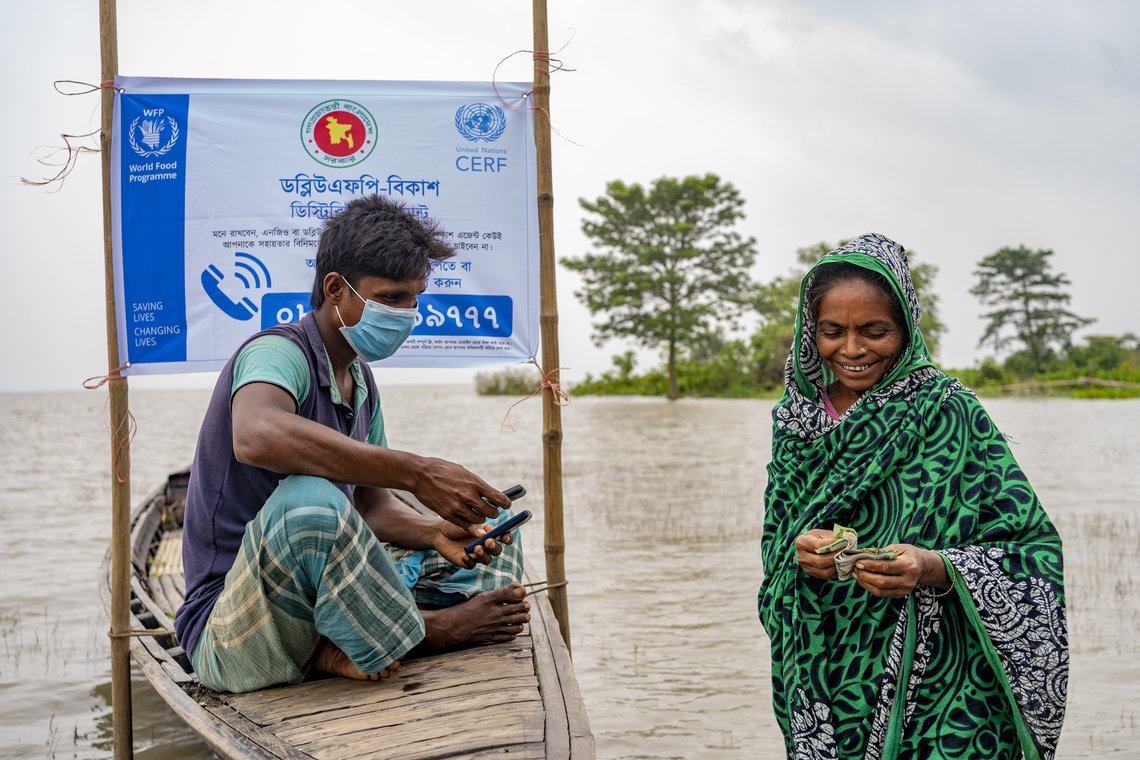Generating evidence on the impact of WFP’s anticipatory cash transfers ahead of severe river floods in Bangladesh
Since 2015, the World Food Programme (WFP) has been collaborating closely with key government stakeholders, the Bangladesh Red Crescent Society (BDRCS) and the Red Cross Red Crescent Climate Centre (RCCC) to develop the Forecast-based Financing (FbF) approach in Bangladesh and support the implementation of anticipatory humanitarian assistance ahead of severe flood events during the monsoon season. In July 2020, as early as 4 days before what would become one of the most severe flooding events on record, WFP triggered anticipatory cash transfers based on the national early warning system. The cash assistance, equal to USD 53, reached about 145,000 vulnerable people with funding support from the UN Central Emergency Response Fund (CERF), Germany and Korea. This was the fastest transfer in the history of CERF, and when compared to WFP’s 2019 flood response, affected households were reached 100 days earlier.

Initiatives that explicitly link weather forecasts to predetermined actions and financing are relatively new in the humanitarian sector and while the evidence base is still thin, it is growing. To generate evidence on the impact of this approach in Bangladesh, the Centre for Disaster Protection (CDP), with support from the University of Oxford, OCHA and WFP, completed an independent evaluation of WFP’s anticipatory cash transfers during the July 2020 floods. This evaluation is a first of its kind, both in terms of the scope of research which focuses on anticipatory cash transfers in humanitarian settings, and due to its robust research design where data was collected from over 9,000 households.
The evaluation by CDP finds that WFP’s anticipatory cash transfers had substantial positive impact on the food security and wellbeing of its beneficiaries:
- Anticipatory cash transfers were mostly spent on food and water, with beneficiary households 36% less likely to go a day without eating during the flood.
- Three months after the flood, households that had received the transfer reported significantly higher child and adult food consumption and wellbeing. They also experienced lower asset loss, engaged in less costly borrowing after the flood, and reported higher earnings potential.
- Beneficiary households took more preparatory actions to reduce the impact of the flood. Households that received the cash transfer were 12% more likely to evacuate household members and 17% more likely to evacuate their livestock. As a result, transfer-receiving households were 8% less likely to lose small livestock and 5% less likely to lose poultry during and after the flooding.
- One-off anticipatory cash transfers help to reduce negative coping strategies that have a cost on future wellbeing and can help households recover quicker, pointing to long-run welfare benefits.
This research is an important start to learning more about the added-value of anticipatory assistance, and its transformation potential for more effective and efficient models for humanitarian aid.
‘Much more learning on anticipatory action is needed. There are real challenges to conducting rigorous impact evaluations. The usual kinds of pre-support preparatory work in impact evaluations are impossible to do when it is not known when or where disasters will hit, or how beneficiaries will be targeted. We hope this work motivates more evidence in this area by showing it is possible to do evaluations. When we do, we can document the impact of the hard work of humanitarian partners and identify clear lessons on the timing and nature of support.’
Quote from the CDP blog.
This blog was written by the WFP FbF team with CDP collaboration.

